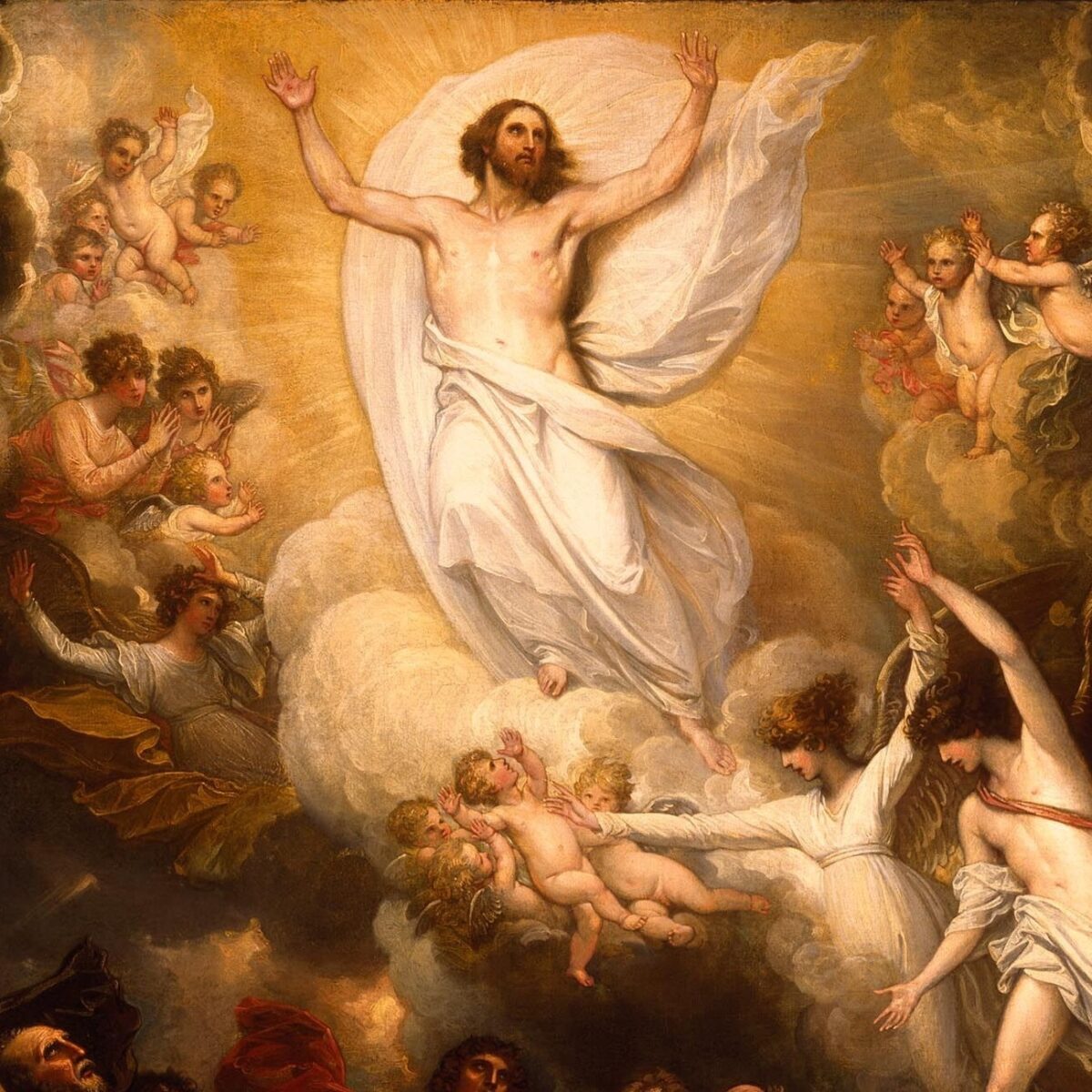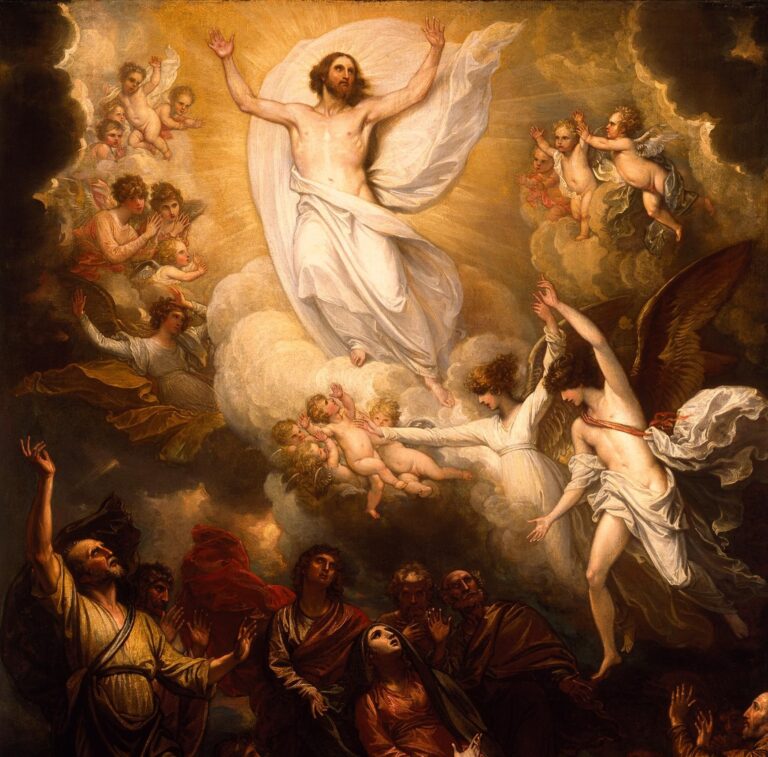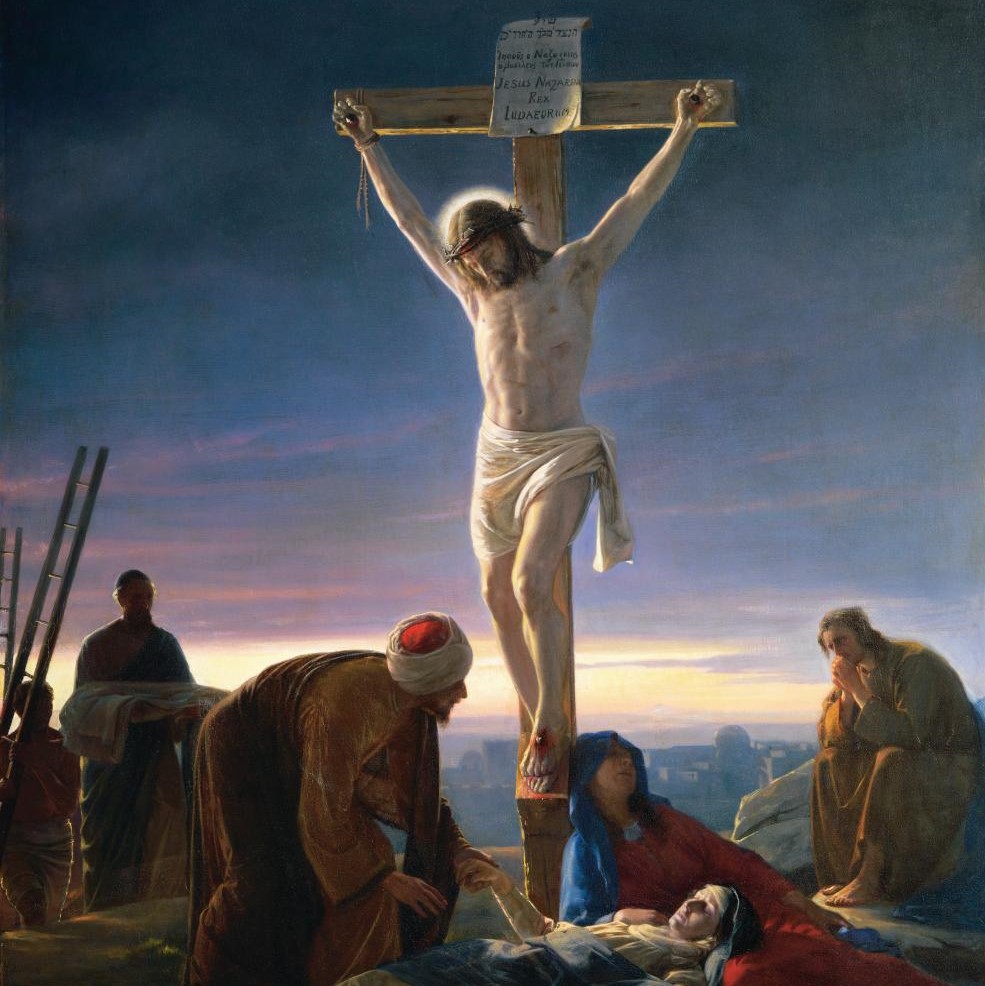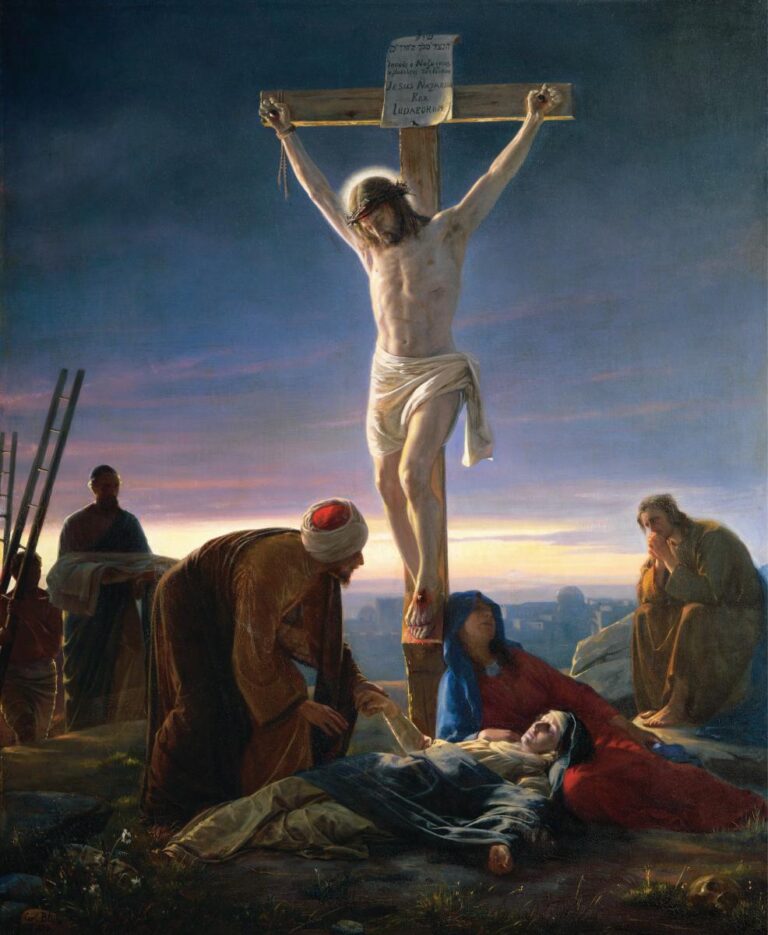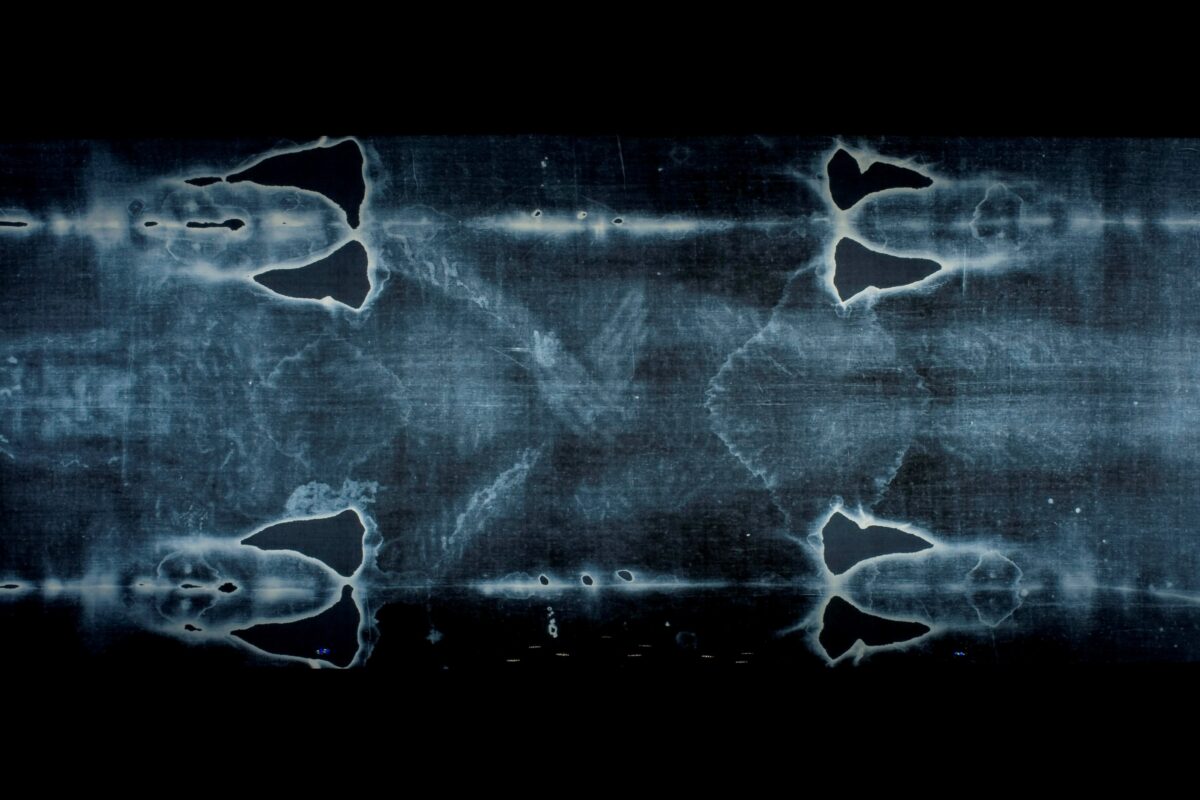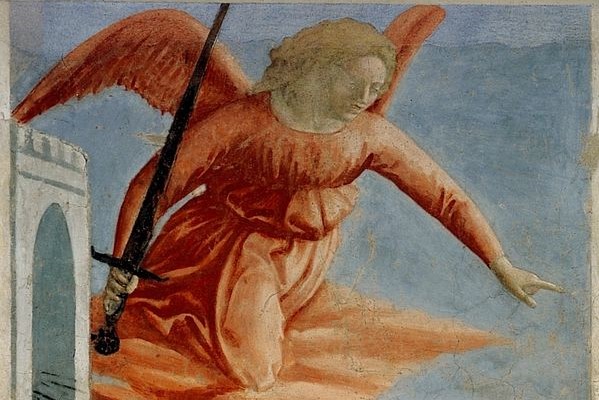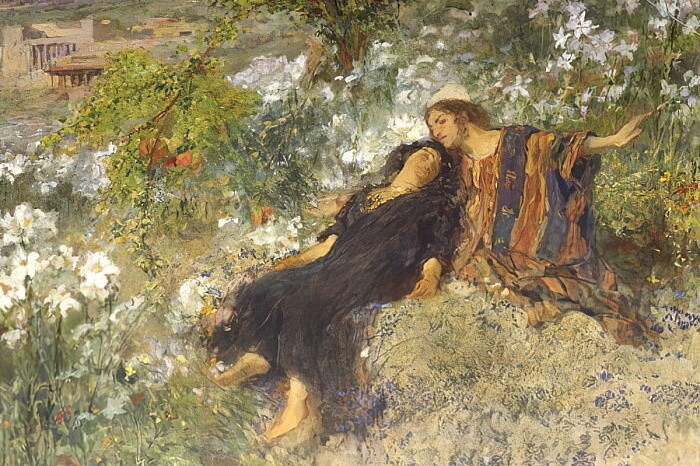13th May 2021
The Ascension of Our Lord
Stefan Kaminski
The Feast of the Ascension can appear to have a slightly puzzling aspect. With the celebration of Our Lord’s bodily resurrection at Easter, we know Him to possess a glorified body that is no longer subject to the limitations of our earthly bodies. Although we hear of Christ’s many appearances to the Apostles and other disciples in the time following Easter, it is clear that His human and bodily nature can already be said to exist independently of this world. If this is true, why does a particular moment of “Ascension” need to take place?
The purpose of the Ascension is best expressed by considering the fact that it divides the Easter season into two uneven periods of forty and ten days respectively.
The significance of the period of forty days, from Easter to the Ascension, should be fairly clear to anyone with a cursory knowledge of Biblical history. Periods of forty days or years appear numerous times in Old and New Testaments: the forty days of the Flood, Israel’s Exodus in the desert, Moses’ time with God on Mount Sinai, and various forty years of peace or slavery for Israel and of the reigns of particular kings. Forty is a time of preparation, a time of transition, which therefore points towards a new era.
In this sense, Jesus’ forty days on earth after His Resurrection have a dual significance.
Insofar as the Resurrection proclaims the possibility of our individual redemption and our restoration to righteousness before God, so the Ascension announces the future restoration of human nature to a state even greater than that in which it was created. As St Thomas Aquinas explains, our mortal bodies belong to this earth, a place of generation and corruption; Christ’s immortal and incorruptible body belongs to the perfection of heaven. In other words, Christ’s Ascension points to the complete rehabilitation of human nature – body and soul – in a future, heavenly state, in “a new heaven and a new earth” (Rev. 21:1).
This is the destiny of that organic home of our soul which we call our body; that which the rupture of Original Sin has caused such a problematic relation with. Similarly to the “sneak preview” that Peter, James and John experienced at the Transfiguration, the Apostles are all blessed with a vision of the bodily glory that God intended for us, as a reflection of the spiritual beauty that He blessed us with.
Whilst drawing the future into the present in this way, the Ascension also and simultaneously closes the era of the Son, with the completion of His work of Redemption for the human race. The Apostles benefit from His presence among them during this time, listening to Him “speaking of the Kingdom of God” (Acts 1:3). As much as this offers a completion and closure to His time among them, it is also a time of preparation for the next era. The arrival of the “Holy Spirit, whom the Father will send in my name” (Jn 14:26), will grant the Apostles the fullness of Christ’s authority in order for them to commence their ministry on His behalf. This era or “phase”, which can be spoken of as the era of the Holy Spirit or of the Church, is the last before Christ’s Second Coming and the renewal of all things in Him.
After the Lord’s Ascension and the time of transition to the new era, we are left with another ten days in which to prepare specifically for the great Feast of Pentecost. It is a particular time of prayer for the Church, which, though already “born” from the side of Christ on the Cross, awaits her anointing with the Spirit. Thus, these ten days form a sort of “mini-Advent”, preparing not to receive the Lord this time, but to put into effect His command to “Go and make disciples of all nations” (Matt 28:19).

